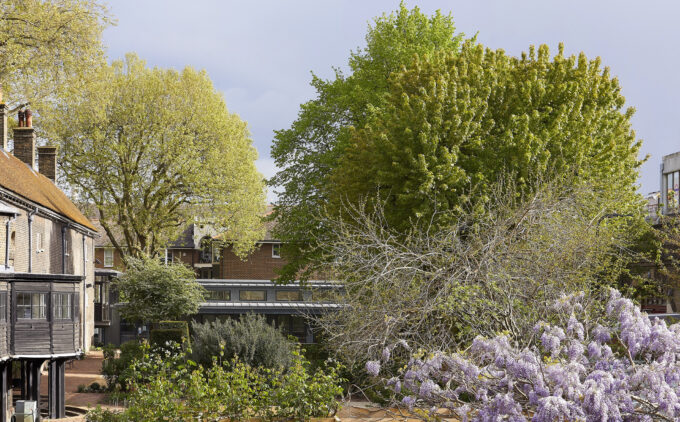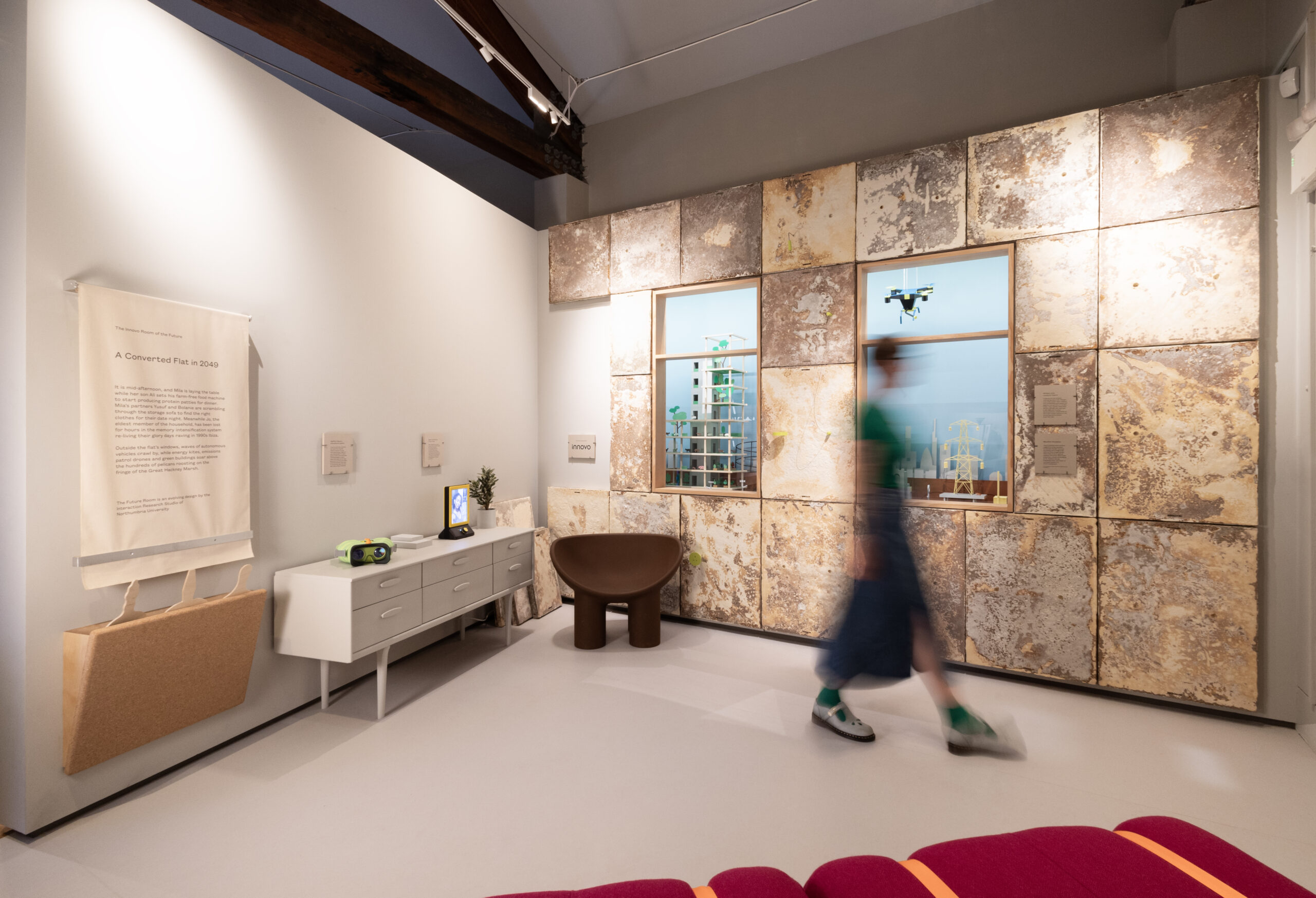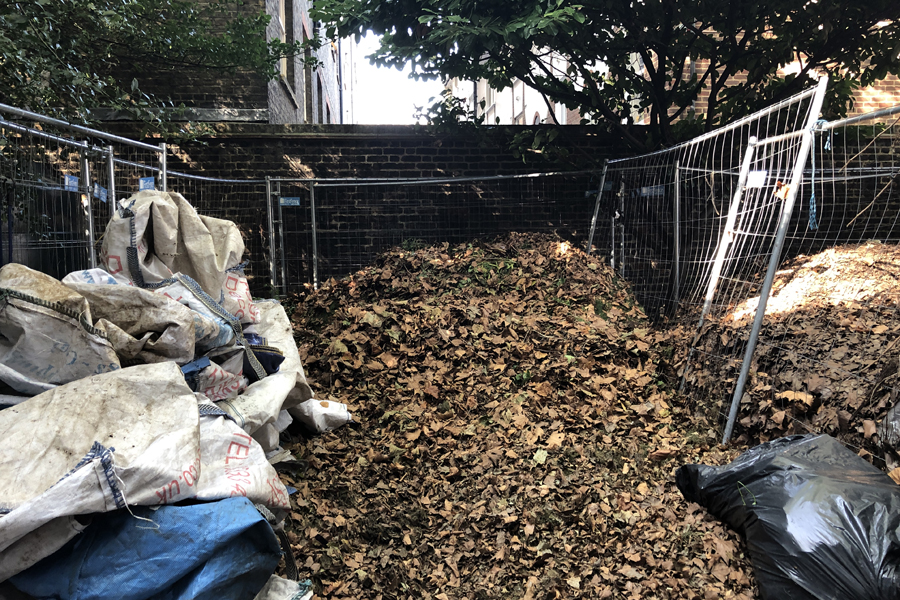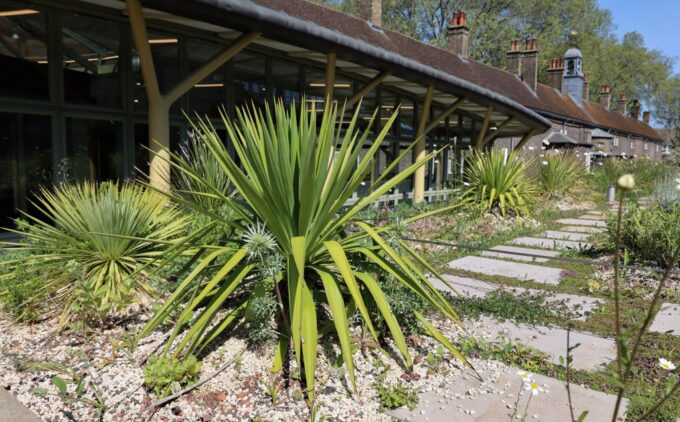To make a waste-free garden, we try to mimic what would happen in a forest. Trees know what they’re doing. Their leaves fall onto the forest floor and form a natural compost that helps other plants.
Compost is good for the soil and helps build the health of the plants: it’s like taking vitamins regularly for general health rather than relying on medication when you get ill.
Making compost
But the museum isn’t a forest and if we left leaves on the lawns it would become dangerous and unsightly. We spend a lot of time clearing the leaves up, so it’s easier to turn them into something useful like compost onsite.
We produce a lot of grass clippings from maintaining our front lawns. Left to themselves, they just turn into smelly sludge, full of creatures that will bite you, so they go into the compost too.
We also have planters made of leftover construction wood, and we make woodchips from fallen branches for new pathways in the gardens.
Patience and efficiency
We built a composting system in an unused part of the garden, which takes in all of our garden waste and turns it into super nutritious, healthy leaf mulch in about nine months. Leaf mulch takes a long time to turn into compost because it needs to heat up, and we also have smaller compost bins, which take around three months to break down.
Before we started the new composting plan we used to clear 12 skips worth of leaves from the trees at the museum every year. We paid to have them disposed of offsite, and then paid again for soil improver.
The old system was expensive, inefficient and not very environmentally friendly. The new compost system takes in all the leaves that come off the museum’s trees as well as our lawn clippings and other waste from across the site.
What makes good compost
Each compost bin needs a mix of greens and browns. Greens are materials rich in protein or nitrogen like hedge clippings, coffee grounds and fresh leaves. Browns are materials rich in carbohydrates like twigs and cardboard.
The coffee grounds and the cardboard come from our offices: recycling them helps us reduce waste even more. Mixed together and taken care of, the resulting compost makes our garden bloom.
The Chelsea Drop
Our trees are plane trees. You might recognise them from many of London’s parks and grand boulevards. Plane trees are a pain for gardeners, but they do a lot of good and are popular city trees, especially in London, because they absorb pollution and help with temperature and water control.
Our planes drop leaves from the spring right through to November. Heather, our head gardener, calls the first big drop in May ‘the Chelsea Drop’ because it happens at the same time as the Chelsea Flower Show.
This drop occurs because the trees are trying to catch as much sunlight as possible to photosynthesize, and arranging their resources accordingly. The trees’ distinctive bark soaks up pollution really well, but also sheds a lot, which makes even more work for the gardeners.
But everything that goes around comes around. Leaves and bark all go into our composting system, to feed and sustain our gardens, making them a place for all our visitors to enjoy.
Discover more

Gardens Through Time
Discover how city gardens have changed and developed over the centuries.
10am-4.30pm, Tuesday to Sunday and Bank Holiday Mondays
Free

Keep in touch
Sign up to our monthly e-newsletter for the latest news, events and exhibitions.

